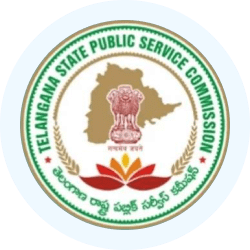Telangana Folk Dance | Telangana State PSC (TSPSC): Preparation Course - TSPSC (Telangana) PDF Download
Introduction
Telangana's tribal culture showcases renowned dance forms celebrated across India. Among them, the Perini Shivatandavam folk dance stands out, known for its distinctive homage to Lord Shiva and performed with tremendous enthusiasm.
Folk Dances of Telangana
Perini Sivatandavam Folk Dance of Telangana
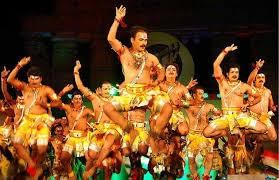
- Perini Sivatandavam, also known as Perini Thandavam, is a traditional dance originating from the warrior community of the 11th century AD. Primarily performed by men, this dance is a devotional offering to Lord Rudra in Shiva Temples.
- The rulers of Kakatiya, such as Ganapathi Deva, Pratapa Rudra Deva of Warangal, and Rani Rudrama Devi, who were devout followers of Lord Shiva, played a significant role in promoting this warrior dance form. However, following the decline of the Kakatiya dynasty, this art form faded into obscurity due to a lack of support.
History of Perini Sivatandavam Dance
- Perini Sivatandavam, an ancient dance form from South India, originated and thrived in Andhra Pradesh during the Kakatiya dynasty. It was inspired by the Kakatiya Temples (1100 – 1300 AD), leading Guru Nataraja Ramakrishna to recreate "Perini Sivatandavam".
- Through meticulous study of Nrittaratnavali by Jayapa Senapati, a dance treatise from the courts of Ganapathi Deva (1199 – 1261 AD), and sculptural depictions on temples like the thousand-pillared temples and shrines at Palampet and Ghanapur in Warangal district, insights into a powerful and vigorous masculine dance style emerged.
- This dance was performed to inspire and energize warriors before battle. Although the Perini dance form thrived during the Kakatiya empire, it nearly vanished after the empire's fall. Dr. Nataraja Ramakrishna (1923 – 2011) played a pivotal role in resurrecting this 700-year-old Perini dance form, along with other ancient spiritual dances like Agama Nartanams and Navajanardana Parijatam.
- The Perini Institute in Warangal, established with the support of Telangana art enthusiasts, was founded on the premises of the Pothana Vignana Mandiram.
Performance of Perini Sivatandavam Dance
- Perini Sivatandavam is considered one of the most exhilarating male dance forms, embodying the Vira and Raudra rasas of Lord Shiva.
- This dance form symbolizes the five elements - Water, Air, Wind, Earth, and Fire, along with honoring the mystical sound of "Om".
- Music plays a crucial role in Perini Sivatandavam, with the use of instruments like Bells, Drums, Conch, and Rhythmic Syllabus creating an intense atmosphere.
- Warriors performed Perini Sivatandavam as a form of worship to Lord Nataraja before heading into battle, seeking inspiration from Shiva.
- The dance commences with Gargara and culminates with Shiva Panchamukha Shabda Nartanam, a tribute to Lord Shiva.
- Dancers energetically move to the beat of drums, embodying the power of Shiva within them.
- Perini Sivatandavam holds both spiritual and artistic significance, with its roots traced back to the Kakatiya Dynasty in Warangal.
- This dance form is prominently depicted in the intricate sculptures at the Ramappa temple in Palampet.
Oggu Katha Folk Dances of Telangana

- Oggu Katha, originating from the Yadav and Kuruma Golla communities, is a traditional folklore singing that praises Hindu gods Mallana, Beerappa, and Yellamma.
- The tradition involves narrating stories of Lord Shiva, particularly Mallikarjuna, as singers travel from place to place.
- Oggus, the traditional priests of the Yadavas, play a significant role in performing the marriage of Mallanna with Bhramaramba.
- The dramatization of narratives by singers and narrators adds depth and richness to Oggu Katha, making it a vital part of Telangana's ballad tradition.
- Singers visit the Komrelly Mallanna Temple annually, further emphasizing the cultural and religious importance of Oggu Katha.
Chindu Bhagavatam

- Overview: Chindu Yakshaganam was a traditional art form prevalent in the villages of Telangana. Performers, known as 'Yakshulu' or 'Jakkulu', showcased various roles like Nagasulu, Kurmapulu, Sanulu, and Bhogalu.
- Historical Figures: Notable historical figures include Pendela Nagamma, Pendela Gangamma, and Machaladevi, the court dancer of Kakatiya Pratapa Rudra.
- Artistic Presentation: The performances were structured in poetic meter, initially featuring solo presentations by women but later incorporating male characters as well.
- Artistic Evolution: The styles of 'Gante Bhagavatulu' and 'Chilukala Bhagavathulu' gained popularity, setting standards for the art form.
- Jogu Community: The 'Jogu' community emerged, with members having the prefix 'Jogu' in their names, preserving the art form across generations.
- Artistic Significance: Chindu Bhagavatam revolved around characters like 'Yellamma', representing Goddess Parvati, and encompassed epics such as Mahabharata, Ramayana, and Bhagavata, along with local folklore.
- Social Context: The Madiga community primarily preserved and performed Chindu Bhagavatam, facing restrictions from higher castes in presenting shows beyond their communities.
Gusadi Folk Dances of Telangana
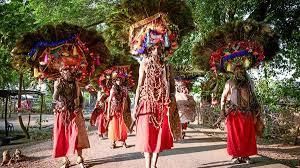
- Gusadi dance is a traditional performance by the "Raj Gonds" in the Adilabad tribal region of Telangana. It is a significant part of their Deepavali festival celebrations.
- During this time, after the harvest season, the Gonds, adorned in vibrant attire and ornaments, visit neighboring villages in groups, singing and dancing.
- These groups, known as Dandari dance troupes, typically consist of twenty to forty members. Within the Dandari, the smaller "Gusadi" group, comprising two to five members, plays a vital role.
- Participants wear distinctive attire including peacock feather turbans, deer horns, artificial facial hair, and goat skins.
- Musical instruments like Dappu, tudumu, pipri, and kalikom accompany their dance, which involves synchronized movements and rhythms in a circular formation.
Tolu Bommalata Folk Dances of Telangana
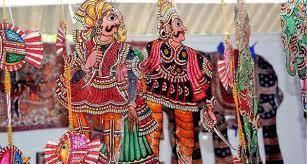
- Tholu Bommalata, also known as the "Shadow Puppet" tradition, is a cultural practice observed in both Andhra Pradesh and Telangana regions. Performers of Tholu Bommalata are part of a traveling group of entertainers and vendors who traverse villages throughout the year offering various services such as singing, fortune-telling, selling trinkets, acrobatics, snake charming, net weaving, tattooing, and pottery repair.
- This ancient custom, serving as a primary source of entertainment and information prior to modern media, spread stories from Hindu epics and local folklore across the Indian subcontinent. Tholu Bommalata, translating to "the dance of leather puppets," involves puppeteers enacting tales from Hindu epics like the Ramayana and Mahabharata.
- Musical accompaniments include a harmonium, a mrudangam drum, anklets and wrist bells, finger cymbals, and a wooden shoe for creating sound effects. The puppeteers engage in night-long performances, captivating audiences with their storytelling and music.
Lambadi Folk Dances of Telangana
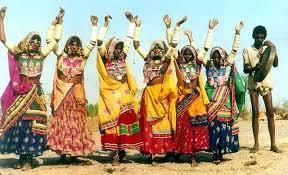
- Lambadi, the folk dance of Telangana and Andhra Pradesh, originated in Anupu Village. It involves tribal women dancing harmoniously to the beats of drums played by tribal men, as a form of worship and respect to their deity for a bountiful yield. Lambadis, also known as Banjaras or Sengalis, are semi-nomadic tribes transitioning towards settled life.
- The Lambadi dance primarily involves tribal women, with occasional participation from men. Dressed in vibrant costumes and jewelry, the women perform dance movements inspired by daily tasks like harvesting, planting, and sowing. This centuries-old traditional tribal dance has evolved to become more vibrant and dramatic over time.
Origin of Lambadi Dance
- The dance form traces its roots back to Rajasthan and migrated to Andhra Pradesh during the reign of King Rana Prathap. Lambadis supposedly supported Prithvi Raj Chauhan against Muhammad of Ghor.
- Lambadi language blends words from Rajasthani, Gujarati, Marathi, and local dialects. Initially traders, Banjaras settled in southern India, adapting to regional cultures while preserving their heritage.
- Lambadi dance costumes are elaborate, adorned with glass beads, mirrors, and intricate jewelry, symbolizing a fusion of diverse cultures. It is performed during festivals like Holi, Dussehra, and Deepawali.
Style of Dance
- The Lambadi dance draws inspiration from the daily activities such as planting, harvesting, and sowing. During festive occasions like Dussehra, Deepawali, and Holi, the city Banjaras engage in this dance, moving from house to house and receiving alms.
- Dressed in vibrant costumes, typically 20-30 Banjara women adorn themselves with brass vessels containing water, either on their waists or heads, as they perform graceful group dances. Their elegant hand and waist movements captivate onlookers, complemented by the slow, swaying gestures unique to Lambadi Gypsy women from Andhra Pradesh.
- Accompanied by male singers and drummers, the dance exudes a sense of fervent grace and lyricism, distinguishing it from the wilder dance forms of Gypsies worldwide. The dancers' delicate sensuality and rhythmic expressions add to the allure of the performance. As the drums intensify, male partners often join in, enhancing the dance's energy.
- With a focus on expression, the Lambadi dance, performed by females, strikes a balance between grace and sensuality, avoiding excessive vigor or eroticism.
Burrakatha Folk Dances of Telangana
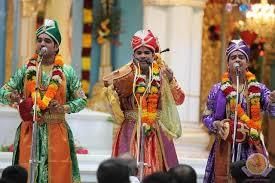
- Burrakatha, an art of storytelling in Telugu culture, takes on different names and variations across regions in Andhra Pradesh and Telangana. In coastal Andhra, it's referred to as jangam katha, while in Telangana, it's known as tamboorakatha or saradakatha. Rayalaseema region recognizes it as Tandana katha or suddulu. Typically performed by a team of two or three individuals from specific castes/tribes like picchuguntla or jangalu, the narrators, also known as Saradagallu, play a significant role in the storytelling process.
- During Burrakatha performances, the main storyteller leads the narration while playing a tambura, a stringed instrument, and dancing with andelu, anklets. Assistants or sidekicks accompany the main narrator, playing small drums called gummeta or budike. There are notable distinctions between Burrakathas from Telangana, Andhra, and Rayalaseema, including language differences and variations in musical instruments used.
- Telangana narrators utilize budige tambura, considering it as a representation of the goddess Sarada, earning them the title Saradagallu. They perform while seated, whereas Andhra storytellers stand while narrating. In Rayalaseema, the main narrator holds a stick while telling the story, with associates playing tambura and drums. The instruments used also vary, with Telangana preferring brass or earthen drums, while Andhra and Rayalaseema narratives utilize padige tambura with a hood.
Origins of Burrakatha
- According to Jangam folklore, the origin of the Jangam tribe is traced back to an encounter with the supreme God Parameswara and his consort, goddess Parvati, in the forest. While hunting for rats, the four founding fathers of the Jangam tribe were encountered by the divine couple.
- Moved by their plight, goddess Parvati implored Lord Parameswara to improve their lives, despite their questionable behavior. The Lord proposed a test to determine their worthiness. Transforming into an old man and a beautiful young woman, they approached the tribal men with suggestions for a better life. However, the men reacted disrespectfully, attempting to harm the woman. Enraged, goddess Parvati cursed them to become beggars and nomads, thus giving rise to the Jangam tribe.
- Embracing the Virashaivism religion under Basava's influence in the 12th century, the Jangam tribe sustained themselves through begging and storytelling, particularly focusing on tales of Lord Shiva in their Burrakatha performances.
- Over time, however, many Jangalu diverged from Virashaivism principles, adopting non-vegetarianism and alcohol consumption, contrary to the teachings of their faith. Despite this divergence, some Jangamdevaras continue to adhere to certain Virashaivism principles, while the Jangam tribe itself has splintered into various castes, each with its own distinct identity.
Modern History of Burrakatha
- During the struggle for independence in the early 20th century on the Indian subcontinent, Burrakatha gained prominence in Andhra Pradesh for political purposes.
- The British government banned Burrakatha in the Madras province, and the Nizam government in the independent Hyderabad kingdom also prohibited it due to its use in political gatherings to raise awareness about the prevailing political scenario.
- In Burrakatha performances, one participant typically served as a political commentator while the other added humor to the narrative.
- Notable artists in this field included Pendyala Venkateswarrao, Paruchuri Ramakotayya, Sirivisetti Subbarao, Kosuri Punnayya, Govardhana, Kakumanu Subbarao, Davuluru, and Chintalal Suryanarayana.
- Women also actively participated in Burrakatha performances, with groups led by figures like Moturi Udayam, Chintala Koteswaramma, and Mahankali Lakshmi.
Dappu Folk Dances of Telangana

- Dappu Nrityam, a traditional dance form in Telangana, is akin to the North Indian Dandora dance.
- The dance is known by various names such as Tapetta and Palaka in different regions of the state.
- Dappu, the musical instrument central to this dance, resembles a drum shaped like a tambourine.
- The rhythmic beats of Dappu are so intense that they are complemented by the jingling sound of ankle bells worn by a group of 15 to 20 dancers.
- The instrument's frame is crafted from neem tree wood and bark, with the drumhead made from buffalo or goat skin.
- To produce its characteristic sound, two sticks are employed to strike the drum's surface.
Origin of Dappu Dance
- Little known to many, the Dappu dance form traces its origins to the small district of Nizamabad in Andhra Pradesh, yet it has gained recognition as one of the prominent dances in the southern region.
- Dancers adorned in vibrant attire embellished with captivating ornaments showcase this lively dance, typically reserved for festivals and significant occasions. Initially confined to royal courts, Dappu dance gradually permeated into the homes and public spaces of the common people, evolving into a cherished form of expression synonymous with joy, celebration, and festivity, particularly during weddings and various cultural festivals.
- Accompanying festive processions, religious gatherings, and competitive events, Dappu dancers captivate audiences with their rhythmic footwork, vibrant makeup, and elaborate costumes, epitomizing the spirit of revelry and cultural heritage.
Style of Dance
- The essence of Dappu dance lies in the improvisational nature of its steps, chosen by the performers during each rendition. Often performed in large groups, Dappu dancers create a melodious atmosphere with the rhythmic jingle of their ankle bells. The accompanying songs, at times, carry erotic or choric themes, guiding the dancers through various predefined steps and styles such as Bird Steps, Tiger Steps, and Horse Steps.
- Encouraged by enthusiastic onlookers, the dancers and drummers showcase their skills at village centers or processions, forming circles or walking in straight rows of two. The dance incorporates diverse movements like forward and backward steps, sideways moves, leaping sequences, and circular patterns. The vibrant music accompanying the performance complements the dancers' movements, creating a captivating spectacle for spectators.
- Rhythmic movements such as Chaturasa, Mirsa, Trisra, Khandagati, and Sankeema, comprising seventeen different beats, form an integral part of Dappu dance. In recent times, Dappu dancers have incorporated traditional talas like trisra, misra, and chaturasra, with common examples being the 'Police debba' for parades, 'cavu debba' for funerals, and 'pelli debba' for marriages.
Music in Dappu
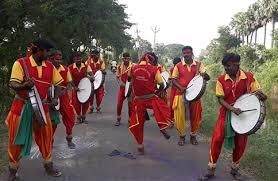
- The Dappu is a percussion instrument crafted with a circular wooden frame primarily made from neem tree wood.
- To enhance durability and produce resonant sounds, the wooden frame is covered with toughened local leather.
- Before fixing the leather onto the Dappu, a detailed process of leather preparation is undertaken by skilled local instrument makers.
Unique Features of the Dappu Instrument
- The term "dhup" or Dappu likely originates from the distinctive sounds it produces when struck with two specially designed sticks.
- The first stick, known as "sire," is held in the right hand, measuring 2 inches in thickness and 9 inches in length.
- In the left hand, the stick called "sitikena" or "chitikena pulla" is held, slightly thinner but of similar length.
- These sticks are adept at creating rhythmic beats of exceptional quality.
Variety in Dappu Music and Dance
- Dance steps and music associated with Dappu performances vary based on the specific occasion and purpose.
- For instance, the rhythms and movements witnessed during rituals, weddings, and village festivities differ from those observed in funeral settings.
Role of Musical Instruments in Dappu Performances
- Tablas, cymbals, and the widely used harmonium contribute to providing music for Dappu dancers.
- The combination of foot-tapping notes and drum beats energizes the performance, offering the necessary motivation for dancers seeking hours of enjoyment.
Chanting and Movements in Dappu Dance
- At the commencement of the dance, members of the Dappu team initiate the chanting of Pradhana Dappu.
- The dancers' movements during these chants are intricate and executed at a notably slow pace, distinguishing this dance form as unique and more exclusive compared to other traditional folk dances in Andhra Pradesh.
Rela Relare Folk Dances of Telangana
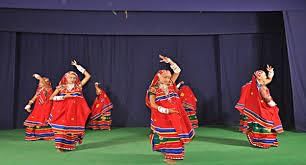
- These traditional dances are commonly performed in Mannem near Bhadrachalam.
Mayuri Folk Dances of Telangana
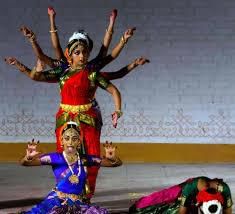
- These vibrant dances are often showcased in the tribal areas of Khammam.
|
80 docs|74 tests
|
FAQs on Telangana Folk Dance - Telangana State PSC (TSPSC): Preparation Course - TSPSC (Telangana)
| 1. What are some popular folk dances of Telangana? |  |
| 2. What is the significance of Bathukamma dance in Telangana? |  |
| 3. How is Perini Thandavam dance performed in Telangana? |  |
| 4. What is the cultural importance of Lambadi dance in Telangana? |  |
| 5. How is Kolatam dance performed in Telangana? |  |



